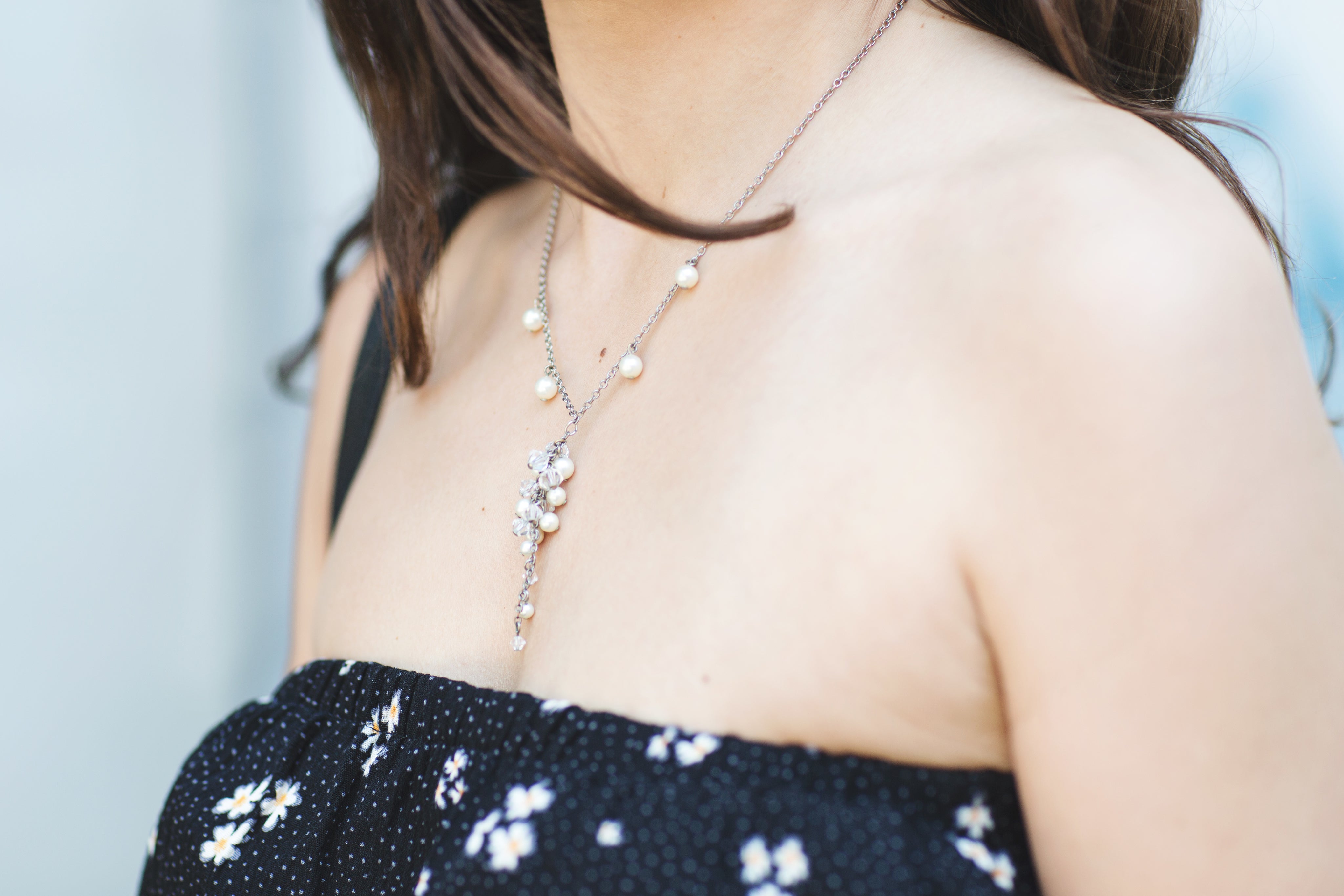
If you’ve bought jewelry before, chances are you’ve got some gold plated pieces in your collection. Gold plating allows designers to create beautiful shapes out of stronger metals while helping to keep the costs down. As a result, many people actually prefer gold plated jewelry, since it's affordable and just as beautiful to look at. Here, we discuss everything you need to know about the popular metal, how to clean gold plated jewelry, and how you can keep your gold-plated collection sparkling for many years.
Types of Gold Jewelry

This is pure, 24-karat gold which is soft and can be easily scratched. As a result, most solid gold jewelry is mixed with other metals or alloys to make 18-karat, 14-karat, or 10-karat gold to increase its durability and hardness.
Gold FilledThese have a layer of gold that's been pressure-bonded to another metal to make it stronger. Because of this, most pieces are durable enough to be worn every day for up to 30 years. However, the thickness of the layer is reflected in the selling price, so the thicker you want, the more you'll need to pay.
Gold PlatedThis is the least expensive type of gold jewelry and is made with a thin layer of gold that's adhered to a metal such as copper or silver through the use of chemicals or electricity. Gold plating is a popular choice for trendy jewelry items that aren't intended to be worn for long periods. After some time, the thin layer of gold will get damaged or dissolve and rub off.
How often should you clean your gold plated jewelry?
Every piece of gold-plated jewelry you have should be wiped down with microfiber cloth or a damp cotton ball after wearing it to remove surface soil and smudges. If your gold-plated jewelry has been exposed to alcohol, chlorine, acids, and sulfur compounds, then a more thorough cleaning is needed. This is because these substances cause the base metals to tarnish.
Tips for cleaning
Follow these tips so you can keep your gold-plated jewelry as lustrous as when you first got it. We've also included ways that you can take preventative measures to make sure damages over time are minimal.
- Don't wear any gold-plated jewelry when applying perfume, make-up, or hairspray.
- Before handling gold-plated jewelry, make sure that your hands are free from make-up, lotion, and soil.
- Make sure to remove any gold-plated jewelry when preparing acidic foods.
- Before exercising, remember to remove gold-plated pieces to prevent salts from damaging your jewelry. This also applies to other activities that lead to excessive sweating.
- While you're wearing gold-plated jewelry, don't swim in salt-water or chlorinated pools.
- Keep in mind not to carry gold-plated jewelry in a purse along with other pieces to avoid damaging them.
- Remember to store all gold-plated pieces in small, separate boxes to prevent them from scratching each other.
Materials needed for cleaning
Supplies:
- Dishwashing liquid
- Warm water
Tools:
- Small bowl
- Microfiber cloth or jewelry cloth
- Cotton ball
- Cotton swab
Cleaning instructions

Use a microfiber cloth or a damp cotton ball to remove any body oils and soil. You can also use a jewelry cloth to wipe down gold-plated jewelry after each use. Before storing it again, allow it to air-dry.
Mix a Cleaning Solution:If your jewelry feels sticky or has visible soil on it, it should be cleaned with a soap and warm water solution. Use a small bowl to mix two to three drops of dishwashing liquid with one cup of water.
Soak Your Jewelry:If your jewelry is free of embellishments such as pearls, gemstones, or enamel, you can place it directly in the cleaning solution and soak them for about 10 minutes. To prevent scratching, clean only one or two pieces at a time.
Tackle Embedded SoilIf you have jewelry that is intricately carved, use a cotton swab to remove soil from small crevices. Keep in mind though, to never use sharp tools such as a knife or paper clip to remove any dirt, as this may scratch and chip away the gold plating.
Rinse, Dry and BuffWhen you've thoroughly cleaned your gold-plated jewelry, rinse it with warm water. Then, dry it using a soft, lint-free cloth and gently buff to return its shine.
Extending the life of your gold plated jewelry
By following the suggestions below, you'll significantly extend the life of your gold-plated jewelry.
- Always wash and dry your hands before putting on and taking off any gold-plated jewelry.
- Before putting on gold plated earrings, make sure that you've applied your perfume first.
- Apply lotion and makeup first before wearing your favorite plated jewelry.
- Remove your plated rings or bracelets first before chopping tomatoes or other acidic food items.
- Avoid rubbing plated necklaces and bracelets against each other and avoid plated rings from rubbing into countertops.
- Prevent rubbing your car keys against your plated jewelry when reaching for them inside your purse or pocket.
- Remove your plated rings and bracelets before changing your baby's nappies.
- Remove all plated jewelry before going for a swim.
- Remove all plated jewelry if you'll be participating in activities where you may sweat profusely.
- When cleaning your plated jewelry, be sure to take care and be gentle with it — rubbing may have negative effects.
- Store all your plated jewelry in a soft cloth or pouch separately from all other jewelry.
Nowadays, having gold plated jewelry doesn't mean that you can't afford full gold jewelry. They've become so popular with fashionistas because not only are they practical and affordable but also because they're available in so many styles and designs to match your outfits. However, because they have a thin layer of gold, they demand more care than other pieces of jewelry. To help them keep their luster, always follow the instructions outlined here, and they'll be shining bright for years to come.




Leave a comment